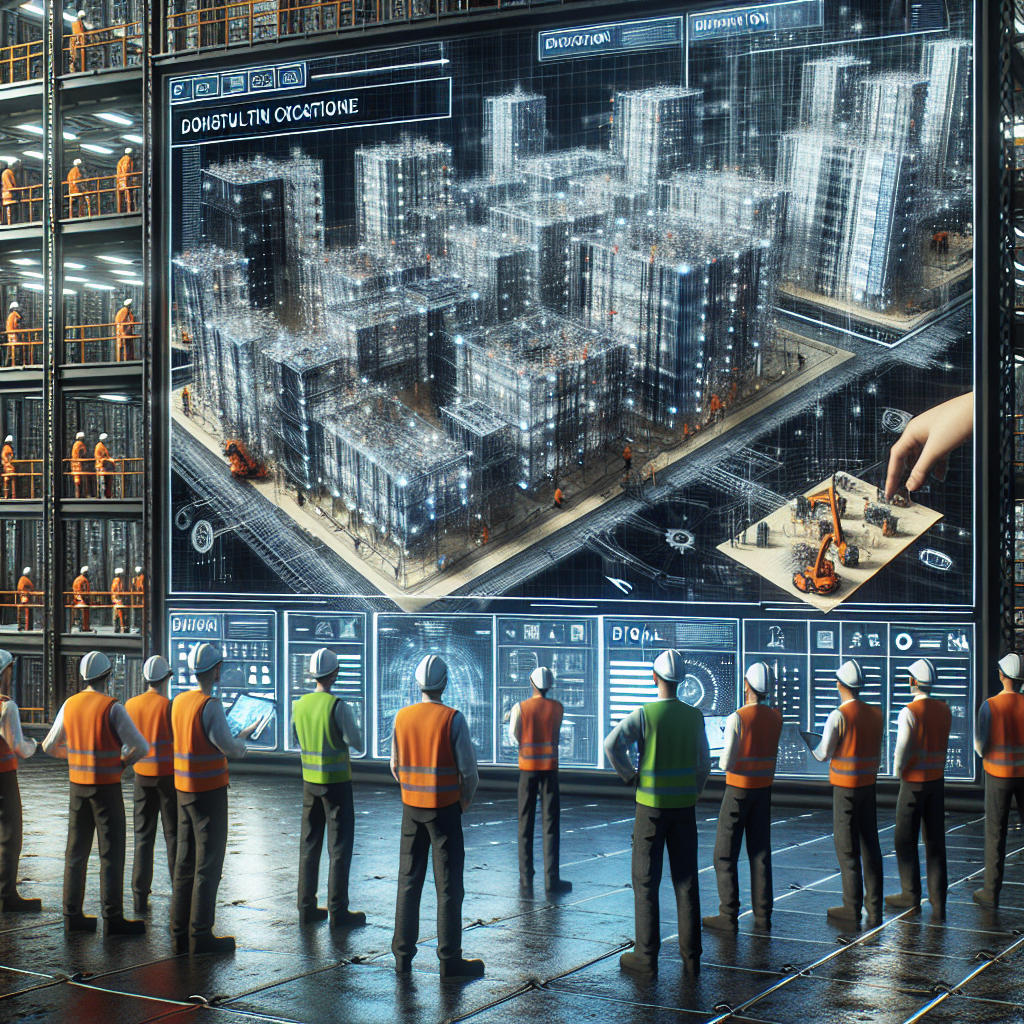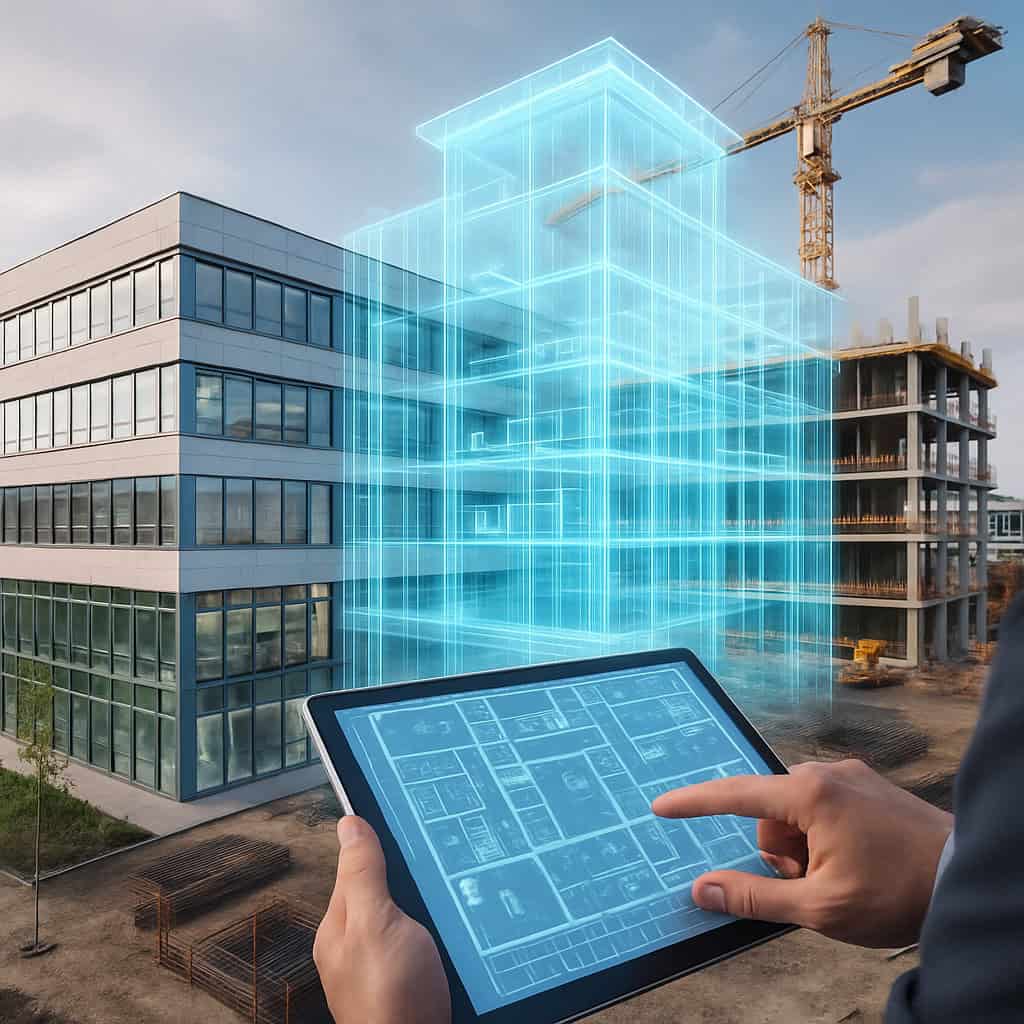In this introduction, we will examine how BIM models can be used in practice to optimise your building management. We will look at the various aspects of BIM planning including the role of architectural software and the benefits of collaborative planning. We will also take a look at how a well thought-out BIMStrategy can help you to optimise the construction process and develop sustainable solutions. implement.

Tip: Start with a clear BIMStrategy! Well thought-out planning can make the difference between a smooth construction process and unexpected challenges.
What are BIM models?
When we talk about BIM models speak, we enter the fascinating world of the Building data modelling. But what exactly is behind this term? Let's take a look at it!
BIMor Building Information Modellingis a revolutionary approach in the construction industry that makes it possible to create and manage digital models of buildings. These models are far more than just 3D representations; they integrate all relevant Data about a building - from the materials used to the costs and schedules.
Did you know that, according to a study by McKinsey, the Implementation of BIM technologies the Efficiency in the Construction by up to 20%? That's no mean feat!
Advantages of BIM models
- Collaboration: Thanks to collaborative planning, everyone involved - architects, engineers and contractors - can access the same model in real time.
- Cost control: With precise data, budgets can be better monitored and unexpected costs minimised.
- Time saving: Digital construction planning speeds up the entire process, as planning errors can be recognised at an early stage.
- Better quality: The use of intelligent modelling solutions reduces the susceptibility to errors and improves the quality of the end product.
- Sustainability: BIM models support sustainable construction by enabling more efficient use of resources and choice of materials.
BIM modelling is not just a trend, but a necessity for modern life. Construction. Integrating this technology into your projects can make the difference between a successful and a chaotic construction project. So grab your architecture software and dive into the world of digital twins!
BIM software and its applications
In the world of BIM modelling play BIM software and their applications play a central role. They are the tools that enable architects, engineers and site managers to efficiently plan and manage digital construction projects. But what specific applications are there and how do they contribute to Optimisation of building management?
The role of architecture software in BIM modelling
Architecture software is at the heart of every successful BIM planning. These software solutions offer functions for 3D modelling in the construction industry that make it possible to create realistic digital models of buildings. One example of this is Autodesk Revit, which is ideal for creating integrated building models.
Digital construction planning and 3D modelling in the construction industry
Digital construction planning has revolutionised the entire planning process. With state-of-the-art 3D modelling tools, all parties involved can visually understand what the final building will look like. This not only promotes communication between the project partners, but also enables problems to be recognised at an early stage.
Planning software for architects and engineers
There is a wide range of specialised planning software solutions for architects and engineers. These Software offers functions such as:
- Collision check in BIM models: Avoidance of collisions between different trades.
- Automated building documentation: Efficient creation of all the necessary Documents during the entire construction process.
- 4D BIM simulations: Visualisation of the schedule in the context of the model.
Tip: When selecting your BIM software that it is user-friendly and integrates seamlessly into your existing IT environment.Infrastructure can be integrated!
BIM for engineers: Collaboration in the construction process
BIM software promotes the Collaborative planning through shared platforms on which all participants can access information in real time. This not only improves the Efficiencybut also minimises misunderstandings during the entire project.

Digital project coordination through integrated building models
One of the largest Advantages of BIM software is the possibility of digital project coordination through integrated building models. These models contain all relevant data on materials, schedules and costs in one centralised location. This makes the entire construction process more transparent and easier to manage.
The introduction of BIM technology can reduce planning costs by up to 30%.
To summarise, the right choice of BIM software is crucial to the success of any construction project. By utilising modern technologies, companies can not only increase their efficiency, but also promote sustainable practices in the construction industry.
Collaborative planning with BIM technology
The Collaborative planning is a crucial aspect of the modern construction industry, and with the introduction of BIM technology has revolutionised the way in which engineers, architects and construction managers work together. Through the use of BIM models not only increases efficiency, but also significantly improves the quality of the projects.
BIM for engineers: Collaboration in the construction process
Engineers are often the unseen heroes of a construction project. They ensure that everything runs smoothly. With the BIM modelling engineers can work in a shared digital environment in which all participants have access to the same information. This enables:
- Real-time coordination: Changes to a model are immediately visible to everyone.
- Collision check: Problems are recognised at an early stage and can be rectified before they lead to expensive delays.
- Improved communication: All team members are on the same page, which minimises misunderstandings.
Digital project coordination through integrated building models
Digital project coordination is another advantage of BIM technologies. Through the use of integrated building models, all aspects of a project - from the Architecture about the Statics to the technical building equipment - can be seamlessly connected with each other. This leads to:
- Better overview: All data is bundled in one place and easily accessible.
- Simple adjustments: Changes to one part of the model automatically affect other areas.
- Faster decision making: With complete information, decisions can be made more quickly.
Did you already know? Studies show that projects with collaborative planning can be completed up to 30% faster using BIM technology!
It is therefore essential that companies invest in the right BIM software and develop a clear BIM strategy. If you haven't jumped on the bandwagon yet, it might be time to rethink your approach to construction project management!
BIM strategies for effective building management
The Implementation from BIM models in building management is like creating the perfect playlist - it requires careful planning, the right tools and a clear strategy. A well thought-out BIM strategy can not only optimise the construction process, but also increase efficiency throughout the entire life cycle of a building.
Development of an effective BIM strategy
In order to develop a successful BIM strategy, the following steps should be taken into account:
- Define goals: Decide what you want to do with your BIM implementation want to achieve. Is it about reducing costs, saving time or improving quality?
- Involve stakeholders: Everyone involved - from the architect to the facility manager - should be integrated into the planning process. This is the only way to ensure collaborative planning.
- Select BIM software: Select the appropriate BIM softwarethat meets your requirements and integrates seamlessly into your existing processes.
- offer training courses: Invest in training for your team. Understanding BIM modelling and the associated tools is crucial for success.
BIM documentation and Automated construction documentation through BIM systems
Careful documentation is a key component of any BIM strategy. Here are some Advantages of automated documentation processes:
- Real-time data access: All relevant information is immediately available, which speeds up decision-making processes.
- Collision check: By using 4D BIM simulations, potential problems can be recognised and rectified at an early stage.
- Defect tracking: With modern BIM platforms, defects can be efficiently documented and tracked, which improves quality assurance.
Tip: Use integrated building modelling tools to optimise the entire construction process and ensure that all data is consistent. This reduces sources of error and improves the overall quality of the project.

Ultimately, the success of your BIM strategy depends on how well you can implement these principles. Remember: a good strategy is like a good recipe - it requires the right ingredients at the right time!
Optimisation of the construction process with 4D BIM simulations
The world of construction planning has changed with the introduction of 4D BIM simulations revolutionised. But what exactly does that mean? Imagine you could not only see how your BIM model but also how it develops over time. This is exactly what 4D BIM technology makes possible - adding a temporal dimension to the existing 3D models.
This technology is not just a stylish gadget for architects; it is a real game changer in the Construction process optimisation. Here are some advantages and application examples:
- Collision check in BIM models: One of the most common challenges in construction is clashes between different trades. With 4D BIM, you can identify and resolve these problems at an early stage before they lead to costly delays.
- Defect tracking via BIM platforms: Quality assurance is significantly improved by digital tools. Defects can be recorded and tracked in real time, which increases efficiency and reduces the likelihood of rework.
- Real-time project coordination: With 4D BIM simulations, everyone involved - from the architect to the Engineer through to the site manager - work together in an integrated model. This promotes collaborative planning and minimises misunderstandings.
- Time management: By visualising the construction process, schedules can be created more effectively. This not only helps to meet deadlines, but also to optimise the use of resources.
Tip: Use specialised BIM softwareto create your 4D simulations. Many programmes offer integrated functions for creating schedules and carrying out collision checks.
A practical example: 4D BIM technology was used to simulate the entire construction process for a large residential construction project in Berlin. The results were impressive: ancillary construction costs were reduced by up to 15 % as unexpected problems were recognised and rectified at an early stage.
Despite these benefits, there are some common misconceptions about 4D BIM simulations. Many believe that this technology is only suitable for large projects or that it is extremely expensive. In reality, even a small project can benefit significantly from this type of planning - both in terms of cost and time!
To summarise, the integration of 4D BIM simulations into your BIM planning is not just a technical gimmick; it can actually help to make your projects more efficient and successful. Remember: If you use the The future of construction, you should keep up with the latest technologies!
Sustainable construction with BIM approaches
Sustainable construction is not just a trend, but a necessity in today's construction industry. Through the use of BIM models architects and engineers can develop innovative approaches to reduce the ecological footprint.
With BIM modelling the entire life cycle of a building is taken into account, from planning and construction through to utilisation and demolition. Here are some ways in which BIM approaches can optimise the Sustainability in the construction industry:
- Intelligent modelling solutions: By using digital twins, planners can run through various scenarios and select the most environmentally friendly options.
- Integration of sustainable materials: BIM software makes it possible to integrate sustainable materials and technologies directly into the digital models. This means that environmentally friendly alternatives can be used as early as the planning phase.
- Energy efficiency: Energy flows can be simulated using 3D modelling in the construction industry, which leads to better planning of heating, ventilation and air conditioning systems.
- Collision check: Recognising conflicts between different trades at an early stage not only saves time, but also avoids unnecessary material consumption.
BIM also promotes collaboration between all parties involved through collaborative planning. This leads to a more efficient use of resources and minimises waste throughout the construction process. One example of this is the use of 4D BIM simulations, in which time sequences are visualised in order to optimise the construction process while keeping an eye on sustainability goals.
Tip: Make sure that your BIM strategy also includes aspects of Sustainability includes. Integrated building models should not only be functional, but also fulfil ecological standards!

To summarise, sustainable construction with BIM approaches is not only possible, but also necessary for a sustainable construction industry. Implementing these technologies can bring significant benefits - both for the project and for our planet.
Conclusion: The future of building management with BIM models
The BIM modelling is not just a trend - it is the The future of building management. With the progressive Digitisation and the development of intelligent modelling solutions in the construction industry is revolutionising the way we plan, construct and manage buildings.
A central aspect of this revolution is the use of digital twinswhich make it possible to depict real buildings in virtual environments. These digital images not only provide a visual representation, but also deeper insights into the entire life cycle of a building. This enables engineers and architects to recognise problems at an early stage and implement solutions more quickly.
Tip: Invest in modern BIM softwareto make your projects more efficient. The right software can make the difference between a smooth construction process and a chaotic project.
Another advantage of the BIM planning is the possibility of collaborative planning. By exchanging information in real time, everyone involved - from the architect to the Engineer right through to the site manager - work together seamlessly. This not only promotes efficiency, but also reduces the Risk of errors.
BIM for sustainable construction
The integration of sustainable materials and technologies in digital twins also supports the goal of sustainable construction. With the help of BIM approaches, companies can minimise their environmental impact and reduce costs at the same time. This is becoming increasingly important in a world that is increasingly focussing on sustainability.
Looking ahead
Overall, it is clear that building management can not only be organised more efficiently with BIM models, but also future-proofed. Companies that embrace these technologies early on will enjoy a clear competitive advantage. The future belongs to those who are prepared to adapt and take innovative paths.
Takeaway: To be successful in modern building management, you should take a close look at the implementation of BIM strategies. Start optimising your processes today!

